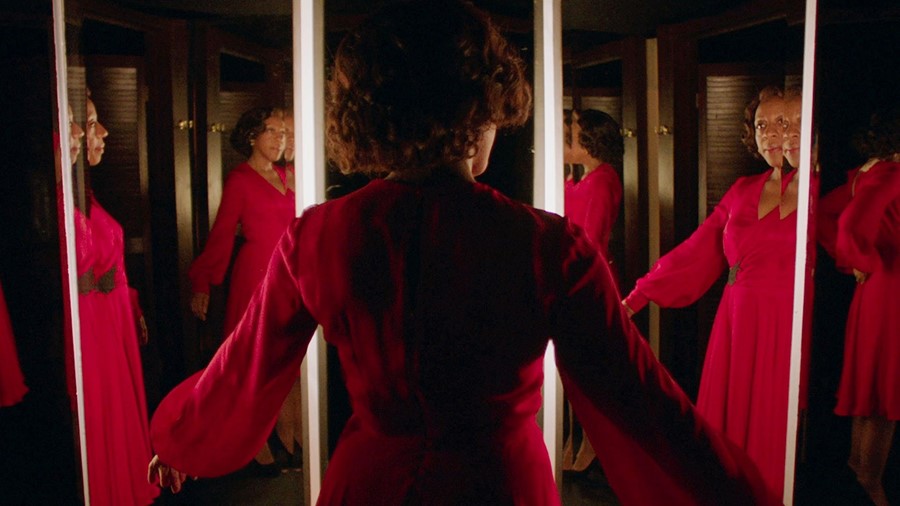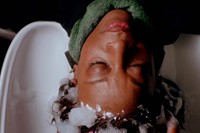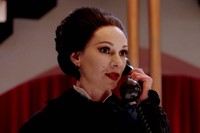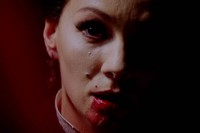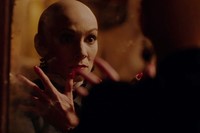As In Fabric, a symphony of strangeness starring Marianne Jean-Baptiste and Gwendoline Christie, hits cinemas, we speak with its director Peter Strickland
The British director Peter Strickland is a man preoccupied with fantasies and fears, with the exploration of genre and the creation of highly curious cinematic worlds – from Berberian Sound Studio (2012), his chilling homage to the Italian Giallo films of the 1970s, to The Duke of Burgundy (2014), an S&M-centric lesbian love story. His latest offering, the horror-comedy In Fabric arrives in cinemas today and unites all of Strickland’s fascinations in a symphony of strangeness. It is the tale of a haunted crimson dress purchased in the Christmas sale of a very odd department store – run by witches, no less – by Sheila, a very normal, recently separated bank clerk. Sheila, played to perfection by Secrets & Lies’ Marianne Jean-Baptiste, hopes the dress will impress on a first date, but the sinister, somnambulatory garment has other plans: to destroy its wearers, as well as their washing machines.
“I’ve always enjoyed objects in films [in the work of] people like Sergei Parajanov, or Luis Buñuel or Jan Švankmajer and clothing is something really fascinating,” Strickland tells AnOther of his starting point for the film. “The human imprint on clothing; how clothing is haunted. It’s very difficult to get rid of a dead person’s shirt if you were close to that person – that shirt could make you cry. A piece of clothing can turn you on if it belongs to someone you desire, or disgust you if it belongs to someone you can’t stand and so on.” The filmmaker investigates this idea not simply through the dress as it changes hands from owner to owner, but through other items which crop up throughout the film. A pair of stockings spark a latent childhood desire in a shy repair man, while a pair of black lace panties inspire revulsion in Jean-Baptiste’s long-suffering character, belonging as they do to her teenage son’s hostile, older lover (a brilliantly sultry Gwendoline Christie).
Strickland was also interested in “how we feel when we put clothing on,” he explains. “How we can feel transformed, or how some of us hate our bodies no matter what we’re wearing. I wanted to look at all these elements: fetishism, body dysmorphia, bodily fluids on clothes, and I then tried to wrap it all around this genre element.” And there are myriad genres at play: surrealism, eroticism, horror, as well as a very British brand of satire. Strickland is often described as a successor to David Lynch or the Giallo directors, and In Fabric’s highly stylised aesthetic certainly invites comparison, but certain scenes – like an exchange between Sheila and her two managers, for instance, to discuss her feeble handshake and inappropriately familiar greeting of her boss’ mistress – nod more to David Brent than Dario Argento. The Office was indeed one of Strickland’s inspirations, he says.

To help his cast navigate In Fabric’s various moods Strickland, who describes himself as “not a particularly verbal director”, developed a scale where “one was social realism and ten was completely whacked out – and nothing was on one or ten but let’s say Sheila’s house was on two, for example, the bank was on five, the store was on seven or eight. I’d convey it by just saying numbers to the actors, so that even if often they wouldn’t change their performance, they’d just be aware of being in a different space.” And his able actors took their cues from that. “The cast were great,” the director says. “Marianne Jean-Baptiste we got on board really early on, Toby Jones suggested her. I wrote Fatma Mohamed’s part [of the spooky head sales assistant] with her voice in mind, as I’ve worked with her before, but she was the only actor I wrote a part for. Gwendoline Christie saw The Duke of Burgundy and said she was interested in meeting up, so we did and discovered we share a lot of the same interests. I said to her, 'Would you be interested in being in this film? I’m afraid there’s only this role where one: she’s called Gwen and two: she’s not very nice!'”
As with all great cinematic endeavours, the beauty of In Fabric lies in the idiosyncratic details which combine to create a unique, entirely immersive experience. All kinds of references spring up, for those with a beady eye: arresting shots of Mohamed’s bald shop assistant framed in a round glass window are directly borrowed from a performance by Hungarian artist Katalin Ladik in Serbia in the 70s, while still imagery of British shoppers, also from the 70s, evoke filmmaker John Smith’s iconic short The Girl Chewing Gum (1976). Vintage retail imagery like the store’s catalogue, meanwhile, draws on found cuttings and pop cinema favourites like William Klein’s Who are you, Polly Maggoo? (1966). “Those films would use consumerist imagery in this quite joyful way, not critically or didactically, and I liked the idea of devoting the whole cinema screen to these catalogue images,” Strickland explains. Sounds were equally important, he notes, from the crisp rustle of the high gloss catalogue paper to the hypnotic soundtrack by Tom Gane’s band Cavern of Anti-Matter (demos from which aided Strickland in setting the mood for his writing process).
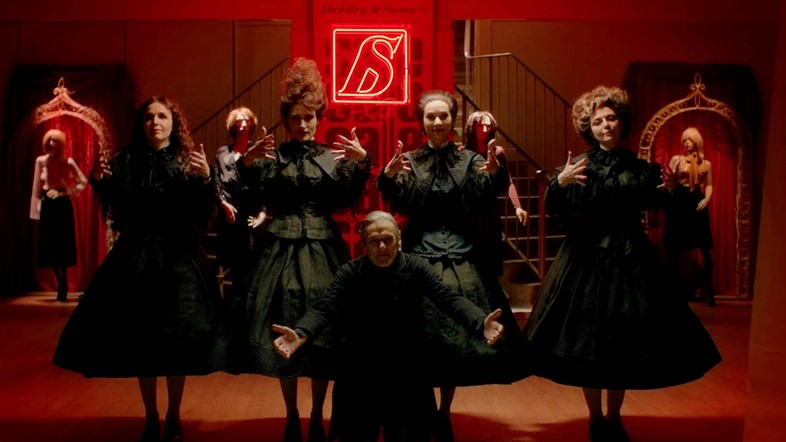
Strickland’s perfectionism shines through when discussing the stress of filming. “I found making the film unbearable,” he expounds. “There were so many things I hadn’t done before: dog attacks, fires, crashes, the extensive make-up. We had 27 days to film, which is very tough, and some things didn’t work – it’s not like Kubrick where you’d have a year to do something and get it exactly right. You get what you get and you work with it.” But there’s no doubt that what he got with his fourth feature is something truly singular with all the trappings of a cult classic.
In Fabric is in cinemas nationwide now.
